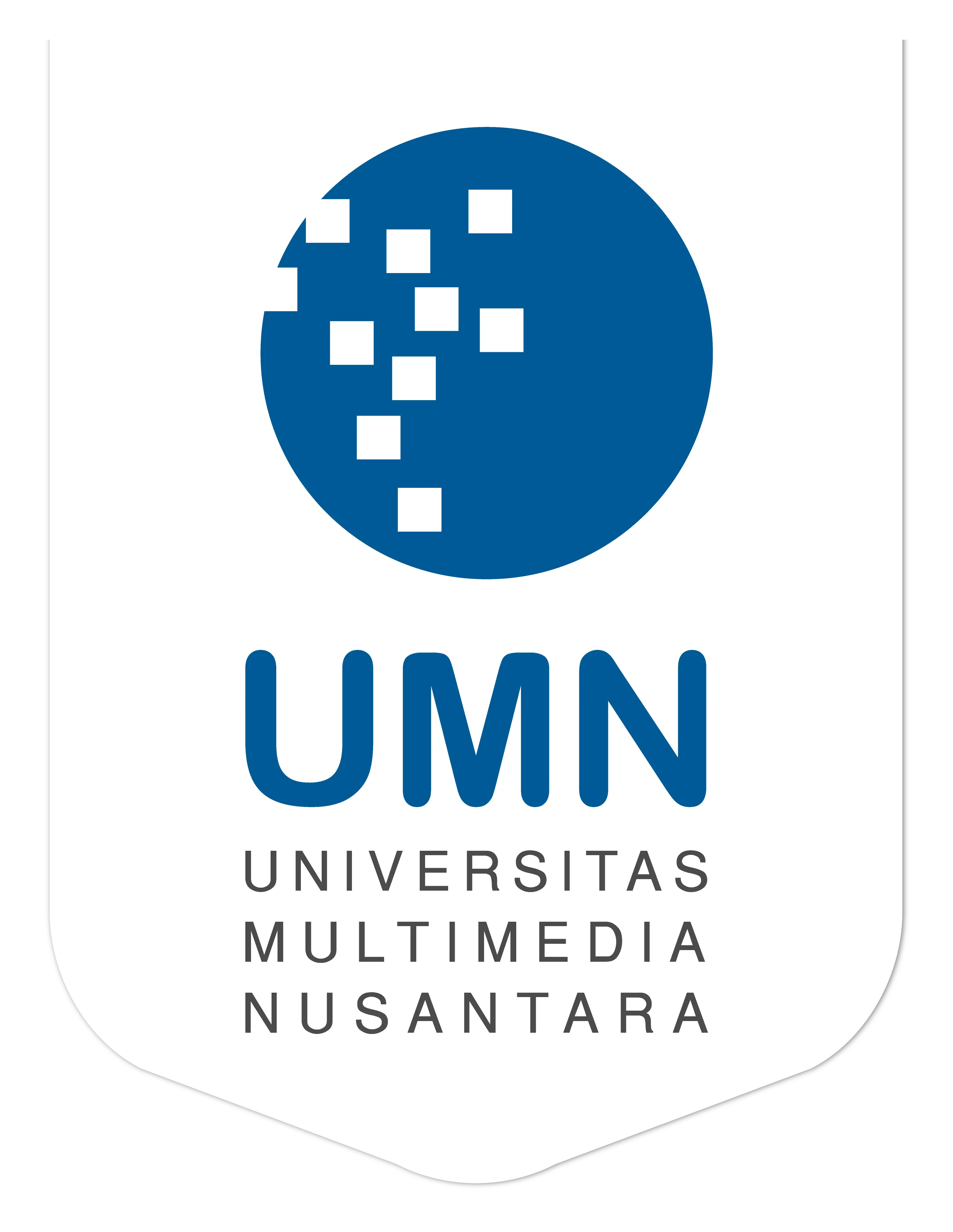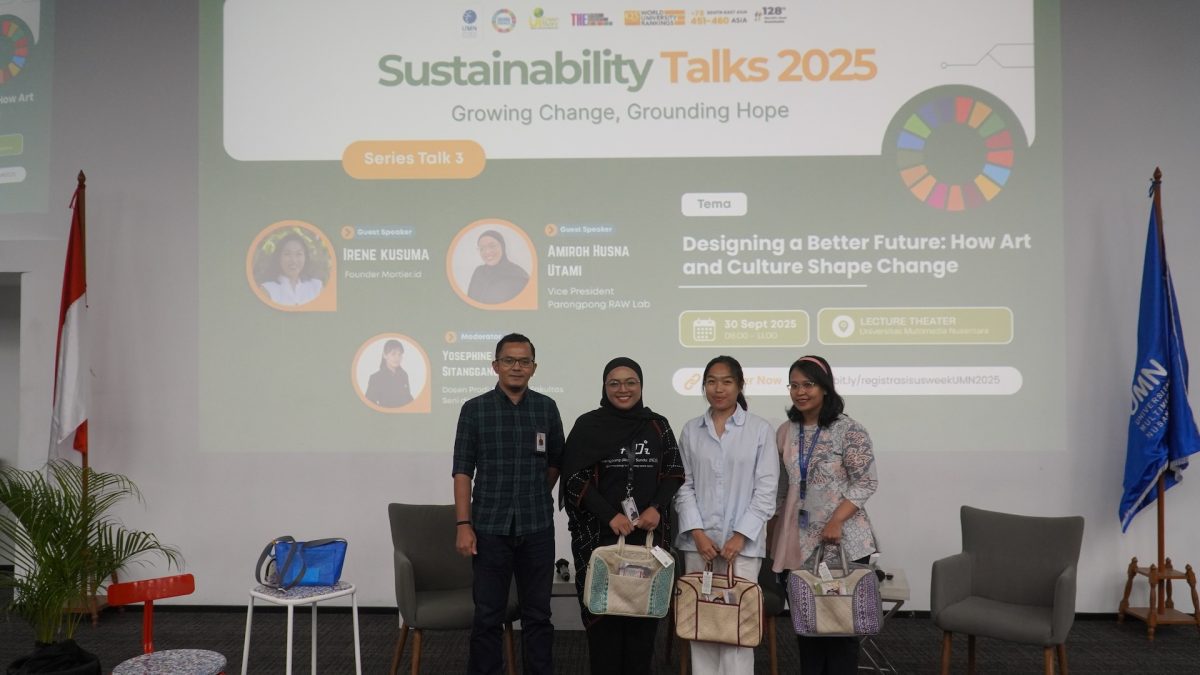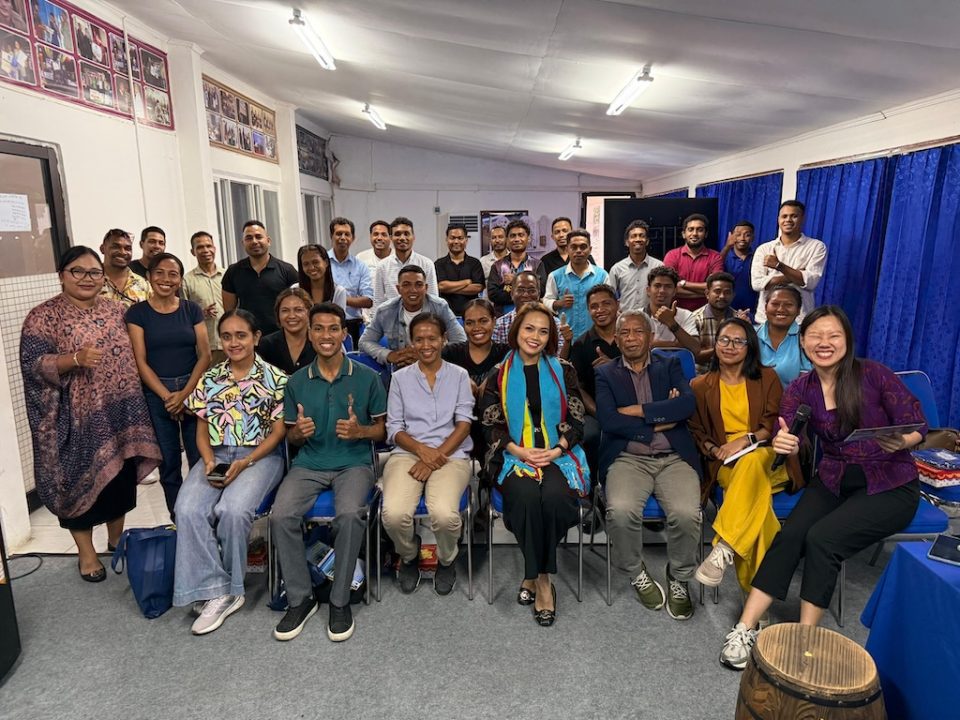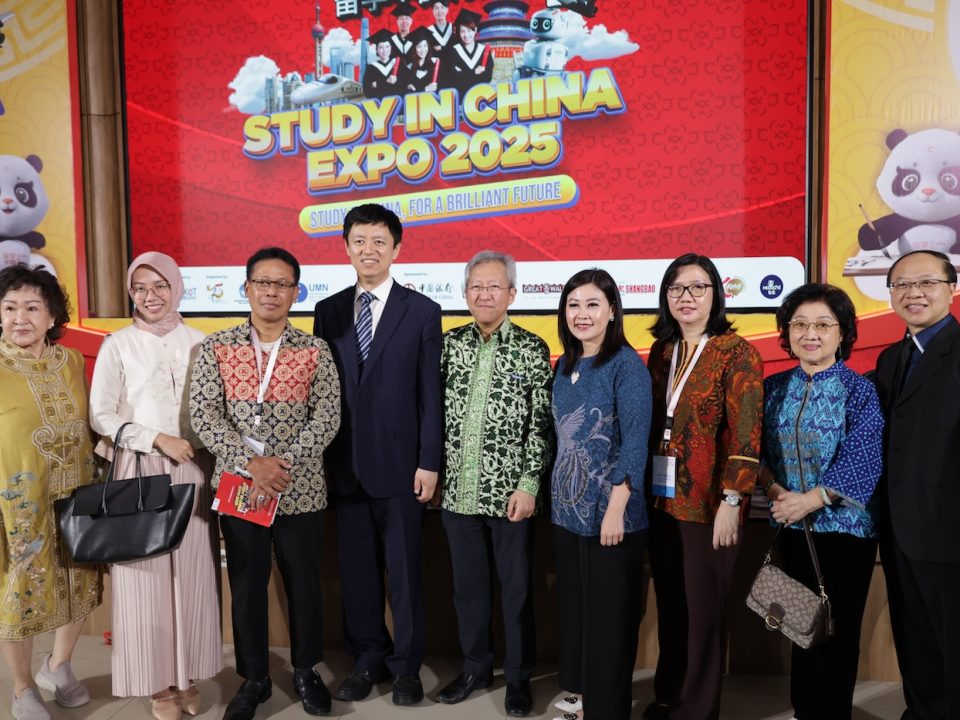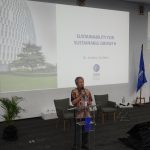
UMN Sustainability Week Highlight: The Role of Higher Education Institutions in Realizing Sustainability in Indonesia
October 3, 2025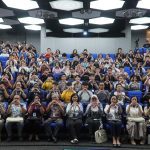
Sustainability Talk: Media Strategies for Communicating Sustainability
October 3, 2025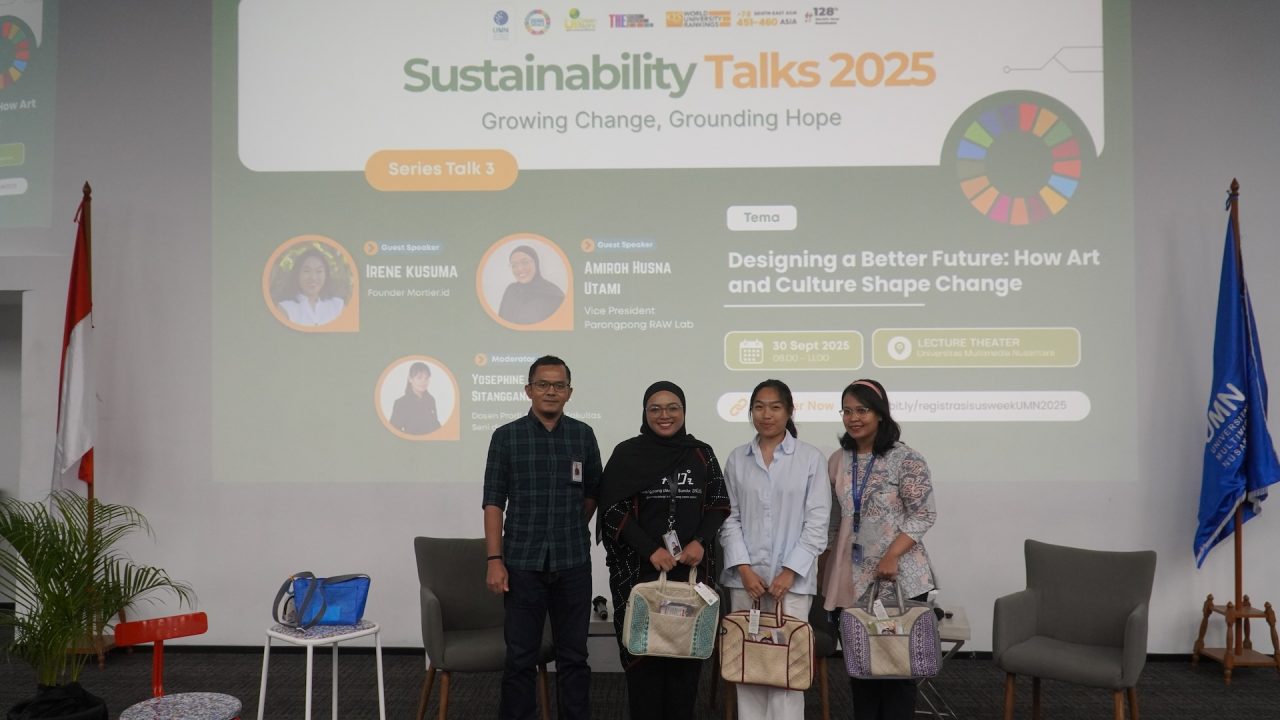
Appreciation given to speakers and moderators by the Dean of the Faculty of Arts & Design, UMN. (Doc. UMN)
Tangerang – On Tuesday (09/30/2025), UMN’s Sustainability Talk continued, this time in collaboration with the UMN Faculty of Arts and Design. This Sustainability Talk will discuss the role of sustainable production and design with Amiroh Husna Utami, Vice President of Parongpong RAW Lab, and Patricia Irene Kusuma, Founder of Mortier, moderated by Yosephine Sitanggang, M.Ars., Lecturer of the UMN Architecture Study Program. This Sustainability Talk will raise the topic “Designing a Better Future: How Art and Culture Shape Change”.
As time progresses, businesses are promoting more and more sustainable innovations. However, these innovations must be clear, able to meet society’s needs, and have a positive impact so that the products do not end up as waste. Amiroh Husna Utami, Vice President of Parongpong RAW Lab, presented the first Sustainability Talk.
“There is a lot of cigarette butt waste, both on land and in the ocean. We saw how the large amount of cigarette butt waste could be processed into a resource without harming future generations. Through our research and development, we found that cigarette butt material can support sustainability, and we have successfully produced various products from cigarette butt waste,” Amiroh explained.
Amiroh explained that cigarette butts are residual waste due to the lack of waste management, and they end up piling up in landfills. This is what motivated Parongpong to turn cigarette butts into an alternative, and they have been doing so for six years. The management of cigarette butts is not done carelessly and goes through various processes that do not pollute the environment.
“To process cigarette butts, we use a prototech hydrothermal system that works like a pressure cooker, so there is no burning, and the output is raw char material that can enter the market and reduce carbon emissions. Not only cigarette butts, we also manage various other types of waste such as coffee grounds and fishing net scraps, with the output being materials that can also be used in the market,” Amiroh added.
Parongpong is not alone and collaborates with various parties, one of which is Oceankita, to collect waste from the ocean. This is done so that calculations and data can be collected to track records. Parongpong strives to innovate various products that can be useful for the community. The seminar continued with the second speaker, Patricia Airin Kusuma, Founder of Mortier, who also discussed how waste production has become a daily necessity.
“A little fact: landfills hold piles of waste up to 14 stories high, and the waste is very diverse, ranging from organic, non-organic, textiles, and other types of waste. 90% of this waste is household waste, meaning that the steps that can be taken must start with individuals, not the government or corporations. That’s why we built Mortier, as a waste bank where waste doesn’t end up in landfills,” Patricia explained.
According to Patricia, managing waste that ends up in landfills becomes increasingly difficult. She also realizes that recycling alone doesn’t solve 100% of the problem. One of the most challenging things to do is to raise awareness among the public to minimize waste.
“Currently, we are receiving many projects with businesses for furniture or more sustainable goods. In addition to Mortier, we also created the Morrthngs brand, which includes bags, pouches, and various other products that we pay close attention to in terms of functionality and durability so as not to create new problems,” Patricia added.
Patricia also explained that the products created are not only sustainable daily items but also aim to raise public awareness through their design and the stories behind them. With this strategy, it is hoped that they will have an impact on the environment and society.
“Our products utilize various household waste materials, including dragon fruit peels, eggshells, coffee grounds, and cassava peels, which can produce different textures. This is also why we established a waste bank, so that collected waste can be processed more quickly and efficiently,” Patricia explained.
Challenges in Sustainable Creative Design
“The challenge faced by Parongpong is how to make products from waste, but make many people unaware that they are products from waste. Of course, to get good end results, it takes a long time and requires careful physical and chemical calculations,” Amiroh explained.
Amiroh stated that they never explain the composition of the product in detail so that people can guess for themselves. For Amiroh, the most essential values in sustainable products are the end result and quality.
“The biggest challenge for us is dirty waste and its poor quality. The dirtier the waste, the more expensive it is because it takes extra time to manage it,” Patricia explained.
Patricia also mentioned another challenge: conveying the value of the product so that the public understands the process, starting from the art and design. For Patricia, the art and design of the product are a powerful language for communicating current sustainability issues.
By Rachel Tiffany | UMN News Service
English translation by Levina Chrestella Theodora
Kuliah di Jakarta untuk jurusan program studi Informatika| Sistem Informasi | Teknik Komputer | Teknik Elektro | Teknik Fisika | Akuntansi | Manajemen| Komunikasi Strategis | Jurnalistik | Desain Komunikasi Visual | Film dan Animasi | Arsitektur | D3 Perhotelan , di Universitas Multimedia Nusantara.
